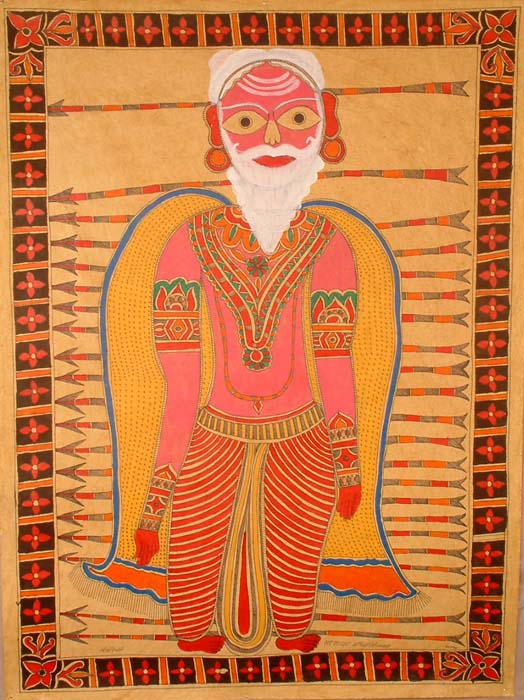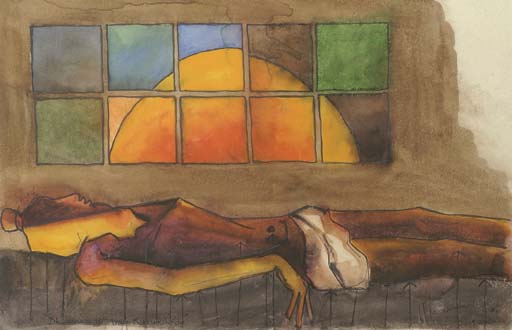

The famous "bed of arrows"; bazaar art, c.1980's
Source: ebay, Oct. 2007

Bhishma reclining on his bed of arrows, a modern stuffed figure
Source: http://www.exoticindia.com/product/CB04/
(downloaded Jan. 2002)

"The Bed of Honour (The End of Bhishma)," a Madhubani painting by Vidya Devi and Dhirendra Jha
Source: http://www.exoticindia.com/product/DG18/
(downloaded Mar. 2006)

Bhishma on his bed of arrows, by M. F. Husain
Source: http://www.christies.com/LotFinder/search/LotDetail.asp?sid=&intObjectID=4271550&SE=CMWCAT03+844154+%2D463791843+&QR=M+1+28+Aqc0000900+807529++Aqc0000900+&entry=india&SU=1&RQ=True&AN=29
(downloaded Apr. 2004)
"MAQBOOL FIDA HUSAIN (b. India 1915). Bhishma - 10th Day Kurukshetra. Signed 'Husain' (lower right) and inscribed '"Bhishma - 10th Day Kurukshetra"' (lower left). Watercolour and black marker on paper laid on card 13 5/8 x 21 in. (34.6 x 53.4 cm.).
Lot Notes: Some of Husain's most recognisable works belong to his series on the two great Indian epics: the Mahabharata and the Ramayana. The present work is simultaneously iconic and narrative. As inidcated by its title, the work represents a specific incident and is therefore firmly rooted in location and time.
The work is also emblematic of Husain's philosophy on the larger role of his paintings play in society: they convey both external as well as internal conflict. "...Psychological conflict is a basic cosmic principle because internal struggle is a defining feature of human life." The brothers fighting the war are "metaphors" for the inner battles within people. His Mahabharata paintings "...poignantly appreciate how time and place become inscribed inside people." (D. Herwitz, Husain, Mumbai, 1988, p. 25.)
Husain's handling of colour in the present work illustrates his mastery
of watercolour as a medium. The background resonates with a diffused light
that is echoed in the prostrate figure in the foreground."
== Indian Routes index == Indian Routes sitemap == Glossary == FWP's main page ==